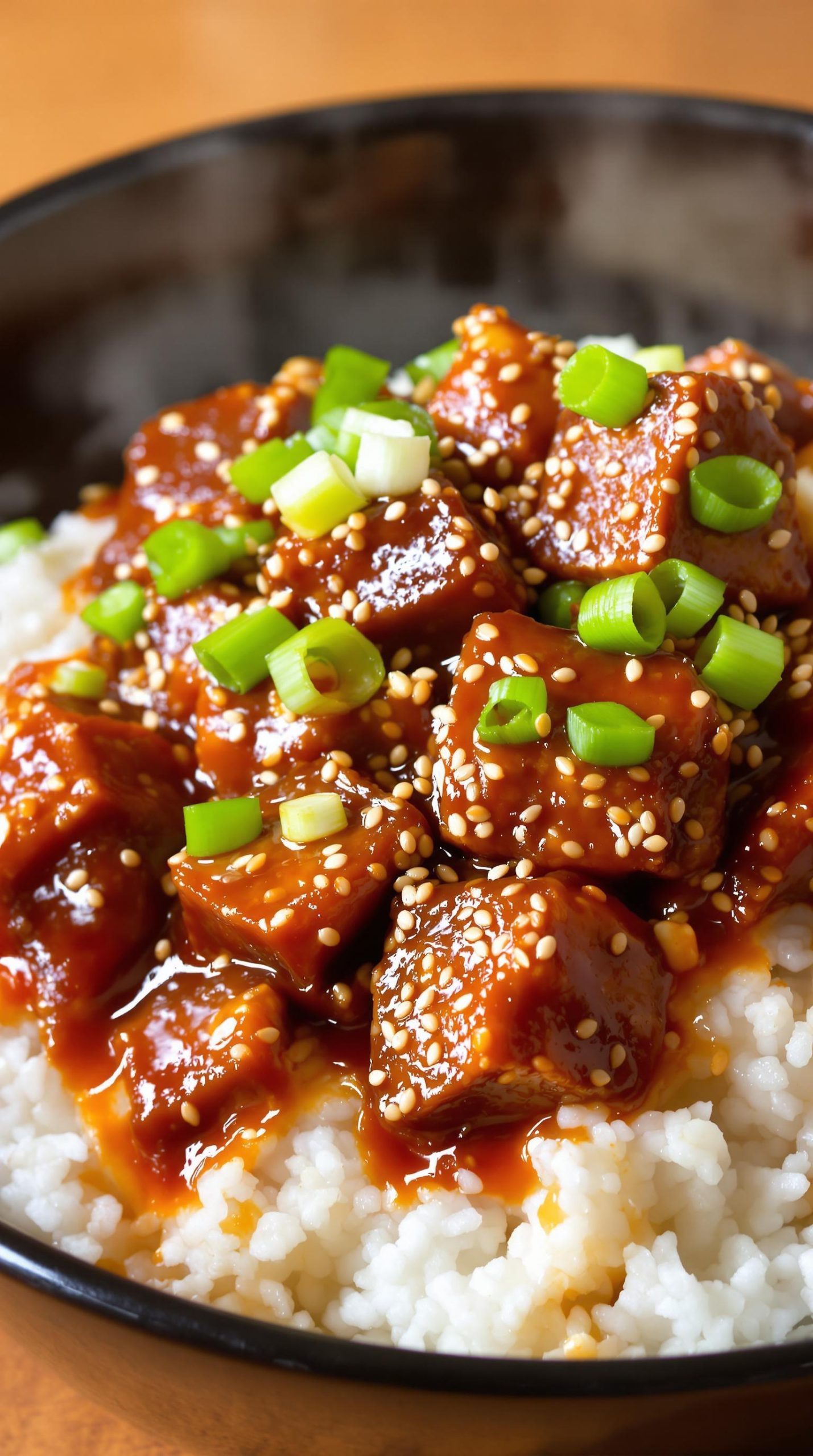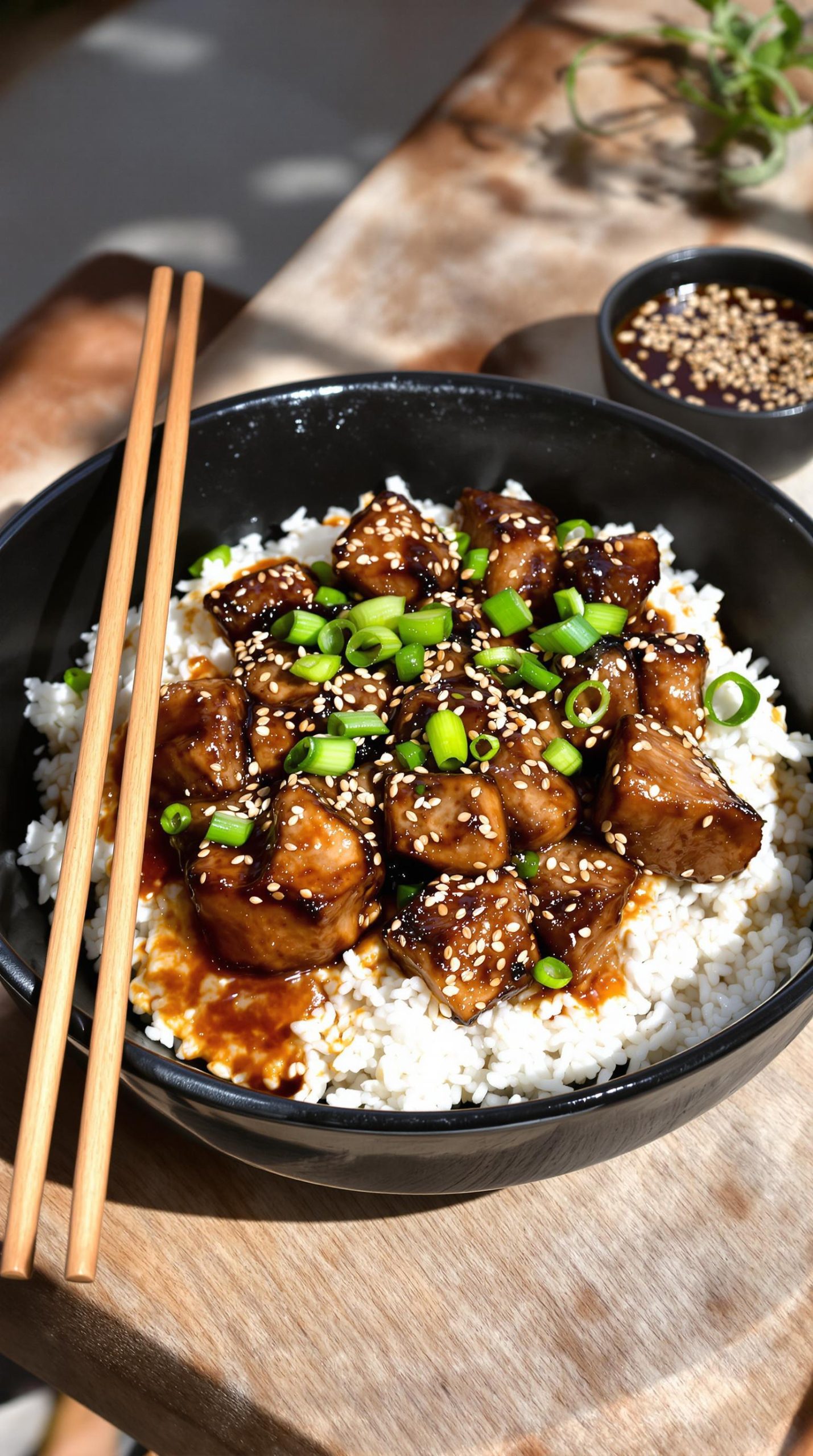Why You’ll Love this Spicy Korean Beef
Once you try this spicy Korean beef, you’ll never want to order takeout again. The perfect balance of soy sauce and cayenne creates that addictive sweet-heat combo that keeps you coming back for more.
Trust me, the overnight marinade is worth the wait—it transforms simple chuck beef into something extraordinary.
I’m obsessed with how the sesame oil adds nutty depth while those toasted sesame seeds provide subtle crunch.
And that quick cooking method? It sears the outside perfectly while keeping the inside tender, just like the Korean restaurants do.
Served over fluffy white rice, it’s comfort food with a kick.
What Ingredients are in Spicy Korean Beef?
When it comes to making this mouthwatering Spicy Korean Beef, the magic truly happens in the marinade. This combination of pantry staples creates that perfect balance of savory, sweet and spicy flavors that make Korean cuisine so irresistible. The ingredients work together to tenderize the beef while infusing it with complex flavors that develop beautifully during the marinating process.
And the best part? You probably have most of these ingredients in your kitchen already.
- 1 pound boneless beef chuck cubes
- ¼ cup soy sauce
- 1¼ teaspoons cayenne pepper
- 1 teaspoon garlic powder
- 1½ teaspoons vinegar
- 2 tablespoons sesame oil (or other oil)
- A dash of black pepper
- 1½ teaspoons sesame seeds
- 1 green onion, sliced (for topping)
- 2 cups long-grain white rice
When shopping for this recipe, try to find a good quality beef chuck—it has the perfect balance of meat and fat for this dish. The sesame oil is pretty important for that authentic Korean flavor, but if you don’t have it, another neutral oil will work in a pinch.
And don’t skip the sesame seeds! They might seem like just a garnish, but they add a wonderful nutty crunch that completes the dish. If you want to adjust the heat level, you can always scale the cayenne pepper up or down depending on your spice tolerance.
How to Make this Spicy Korean Beef

Making this Korean beef is all about patience and big flavor. The process starts with creating a deeply savory marinade by mixing ¼ cup soy sauce, 1¼ teaspoons cayenne (adjustable based on your heat preference), 1 teaspoon garlic powder, 1½ teaspoons vinegar, 2 tablespoons sesame oil, a dash of black pepper, and 1½ teaspoons sesame seeds in a container.
This potent combination needs time to work its magic on the 1 pound of boneless beef chuck cubes, so cover the container and refrigerate overnight, or at absolute minimum, 8 hours. Trust me, the longer marinating time makes all the difference in developing those complex flavors we’re after.
When you’re ready to cook, you have two excellent options. For the best results, fire up the barbecue to high heat and quickly sear the marinated beef cubes for just one minute per side. This high-heat cooking method caramelizes the exterior while keeping the interior tender and juicy.
Don’t have a grill? No problem. Indoor cooking works beautifully too—heat an iron skillet (or your heaviest pan) until it’s screaming hot, then toss in the marinated meat and cook over high heat for about 2 minutes per side. Having a professional wok set can elevate your cooking experience and provide excellent heat distribution for this type of Asian-inspired dish. The quick cooking preserves the tenderness of the beef while creating those delicious charred edges we all love.
For an authentic Asian cooking experience, consider using a high end electric wok that provides consistent heat distribution perfect for this Korean beef recipe. For the finishing touch, quickly fry the sliced green onion in the same pan and add any remaining marinade to create a flavorful sauce. Meanwhile, prepare 2 cups of long-grain white rice according to package directions.
When everything’s ready, serve the sizzling beef over a bed of fluffy rice, making sure to spoon some of that incredible sauce over the top. The combination of the spicy, savory beef with the mild, absorbent rice creates the perfect balance—each bite containing the full spectrum of flavors from this classic Korean dish. Couldn’t be simpler, couldn’t be more delicious.
Spicy Korean Beef Substitutions and Variations
While this Korean beef recipe is delicious as written, it’s incredibly adaptable to whatever ingredients you have on hand or dietary preferences you’re working with.
Don’t have sesame oil? Regular vegetable or olive oil works in a pinch. Looking for a leaner option? Swap chuck for sirloin or even chicken breast. Vegetarians can substitute firm tofu or tempeh—just reduce the marinating time to 4 hours.
For a lower-carb meal, serve over cauliflower rice instead of white rice. Want it extra spicy? Double the cayenne or add fresh minced chilis. Honey or brown sugar can balance the heat if you’re sensitive to spice.
What to Serve with Spicy Korean Beef
The perfect side dishes can transform your spicy Korean beef from a simple meal into a memorable feast.
While the recipe already suggests serving over white rice (which soaks up that delicious marinade beautifully), I love adding a few more companions to round things out.
Try quick-pickled vegetables for tanginess—cucumber, radish, or carrot work wonderfully.
Kimchi is a natural pairing, offering probiotics and that signature fermented kick.
For something fresh, a simple side salad with sesame dressing keeps things balanced.
Want more substance? Korean pancakes (pajeon) make the meal complete.
Final Thoughts
After discovering this spicy Korean beef recipe, I’m convinced it’s one of those essential dishes everyone should have in their cooking arsenal.
The balance of soy sauce, cayenne, and sesame oil creates this perfect harmony of flavors that’s both boldly spicy and deeply savory.
What I love most? The versatility. You can adjust the heat level, serve it at family dinners or dinner parties, even meal prep it for busy weeknights.
And isn’t there something magical about a marinade that does all the heavy lifting for you? The longer it marinates, the more tender and flavorful it becomes.
Korean beef perfection, simplified.





